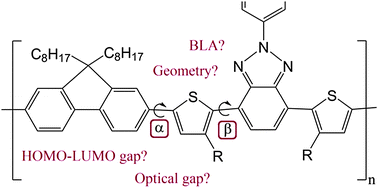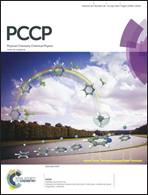Modeling of photoactive conjugated donor–acceptor copolymers: the effect of the exact HF exchange in DFT functionals on geometries and gap energies of oligomer and periodic models†
Abstract
Conjugated copolymers with an alternating donor–acceptor (D–A) architecture are exploited as low-bandgap and high-hole-mobility materials in organic electronics. However, several of the presently available modeling methods predict different geometries and electronic properties for the same copolymer. In this work, the effect of the amount of exact Hartree–Fock (HF) exchange in density functionals on the planarity of the geometry and the electronic properties of the single oligomer chains of one benzodithiophene- and benzotriazole-based donor–acceptor copolymer and two fluorene-, thiophene-, and benzotriazole-based donor–acceptor copolymers is assessed. The functionals are B3LYP, PBE, PBE0, HSE06, LC-ωPBE, ωB97XD, M06, M06L, M062X, M06HF, and the optimally tuned OT-ωB97X. Benchmarking of the methods is useful for understanding the results of a particular functional and allows, to a certain degree, comparison between results obtained with different functionals. Additionally, the applicability of the one-dimensional periodic boundary condition (PBC) for modeling the D–A copolymers with long constitutional repeating units (CRUs) is evaluated.


 Please wait while we load your content...
Please wait while we load your content...